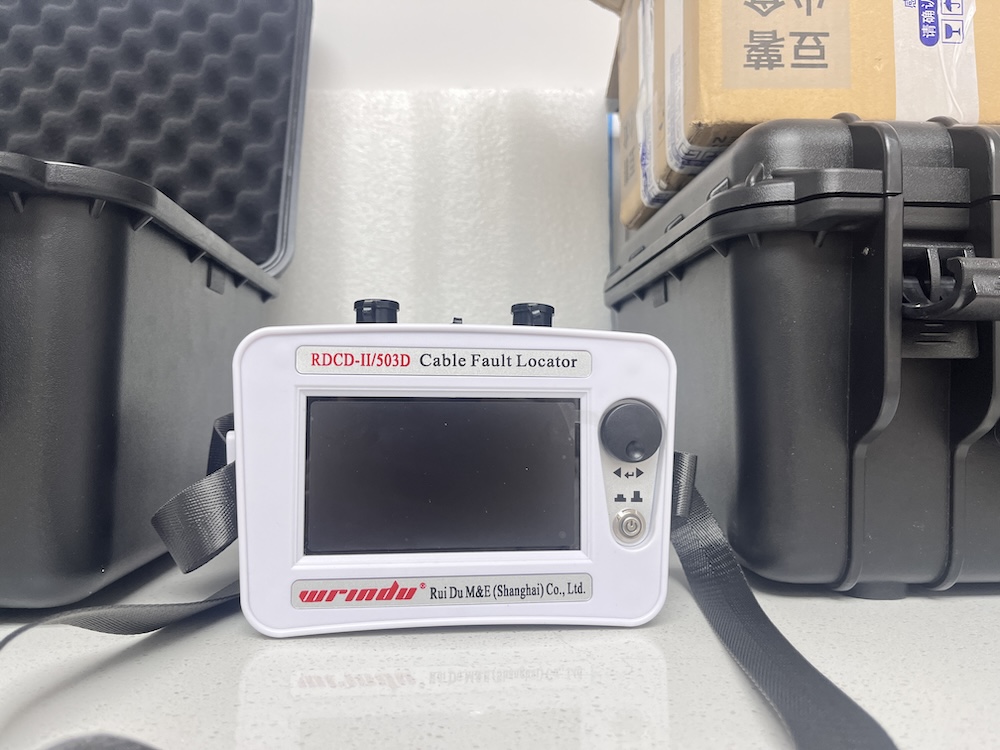Common Types and Detection Methods of Cable Fault
In power systems, cable faults significantly impact stability and safety. Understanding cable fault types and mastering detection methods are critical for ensuring reliable cable operations. Below is an overview of common cable fault types and detailed detection methods with key operational tips.
1. Low-Resistance Faults
Low-resistance faults are usually caused by insulation damage or short circuits, which significantly reduce the resistance between cable phases or ground.
Detection Method and Procedure
Insulation Resistance Test: Use a megohmmeter to measure phase-to-phase and phase-to-ground insulation resistance. If values are significantly below normal, this indicates a low-resistance fault. Ensure the environment is dry, and the test points are clean.
Time-Domain Reflectometry (TDR): TDR is effective for accurately locating low-resistance faults. It injects a low-voltage pulse into the cable and analyzes the reflected waveform to pinpoint fault location.
Pulse Width: Shorter pulses are ideal for locating nearby faults, while longer pulses are suitable for longer distances.
Propagation Speed Calibration: Set the propagation speed according to cable material and type to enhance measurement accuracy, as different cable materials and types have varying propagation speeds.
2. High-Resistance Faults
High-resistance faults typically result from aging insulation, moisture, or environmental stress, causing the cable to display high resistance even under voltage.
Detection Method and Procedure
Insulation Resistance Measurement: High-voltage megohmmeters measure insulation resistance, with high-resistance faults presenting as abnormally high resistance values.
Bridge Testing
Murray Bridge: Suitable for short-distance, high-resistance fault locations. It connects a healthy conductor as a reference and balances the bridge current to calculate fault distance.
Glaser Bridge: Effective for multi-core cable faults using two healthy cores as auxiliary lines for detection.
Notes: Maintain stable testing conditions to prevent temperature or humidity from affecting precision.
3. Open-Circuit Faults
Open-circuit faults typically arise from mechanical damage or overloading, leading to discontinuous cable conductors.
Detection Method and Procedure
Conductor Continuity Test: Use a multimeter to check conductor continuity. Open-circuit faults appear as “open” readings.
TDR Detection: Open-circuit faults produce a prominent reflected waveform in TDR analysis, allowing calculation of the physical location of the break.
Operational Safety Tips: In high-voltage environments, wear insulating protective equipment and disconnect power to ensure safety.
4. Ground Faults
A ground fault occurs when one or more cable phases unintentionally conduct to the ground, often due to insulation damage or moisture.
Detection Method and Procedure
Insulation Resistance Test: Ground faults are indicated when insulation resistance values drop below standard levels.
Dielectric Loss Test (FDS): Increasing frequency progressively reveals changes in insulation properties, which can identify insulation aging.
Curve Changes: Abrupt changes in insulation loss as frequency increases indicate potential ground faults.
Frequency Range: Testing between 0.1 Hz to 100 Hz provides a comprehensive assessment of cable aging.
5. Intermittent (Flashover) Faults
Intermittent faults occur under voltage, creating brief discharges. These faults are often accompanied by partial discharges and typically occur at cable terminals or in moist environments.
Detection Method and Procedure
Partial Discharge Testing: Use a partial discharge detector to monitor discharge events. Gradually increase voltage until flashover occurs, pinpointing the discharge point.
Acoustic-Magnetic Synchronous Detection
Time Difference Method: Combines acoustic and electromagnetic signals to locate faults based on the time difference between the two signals.
Application: Suitable for precise fault location in complex environments, such as underground cables or high-electromagnetic interference areas.
6. Sheath Faults
Sheath faults occur when the cable’s outer sheath is damaged, allowing moisture ingress that lowers insulation performance, potentially leading to ground or short-circuit faults.
Detection Method and Procedure
Insulation Resistance Testing: Measure sheath-to-ground insulation resistance at 500V-1000V DC. A normal sheath insulation should exceed 500 megaohms.
DC Withstand Voltage Test: Gradually increase voltage, checking for leakage or discharge on the sheath.
Voltage Increase Rate: Use a 0.5kV/s rate to ensure accurate data collection.
Insulation Monitoring: If sheath insulation fluctuates, consider additional sealing or sheath replacement.
Understanding various fault types and employing precise detection techniques are essential for power system maintenance. Power engineers should select appropriate methods based on cable type, fault nature, and system parameters to ensure accurate results.





